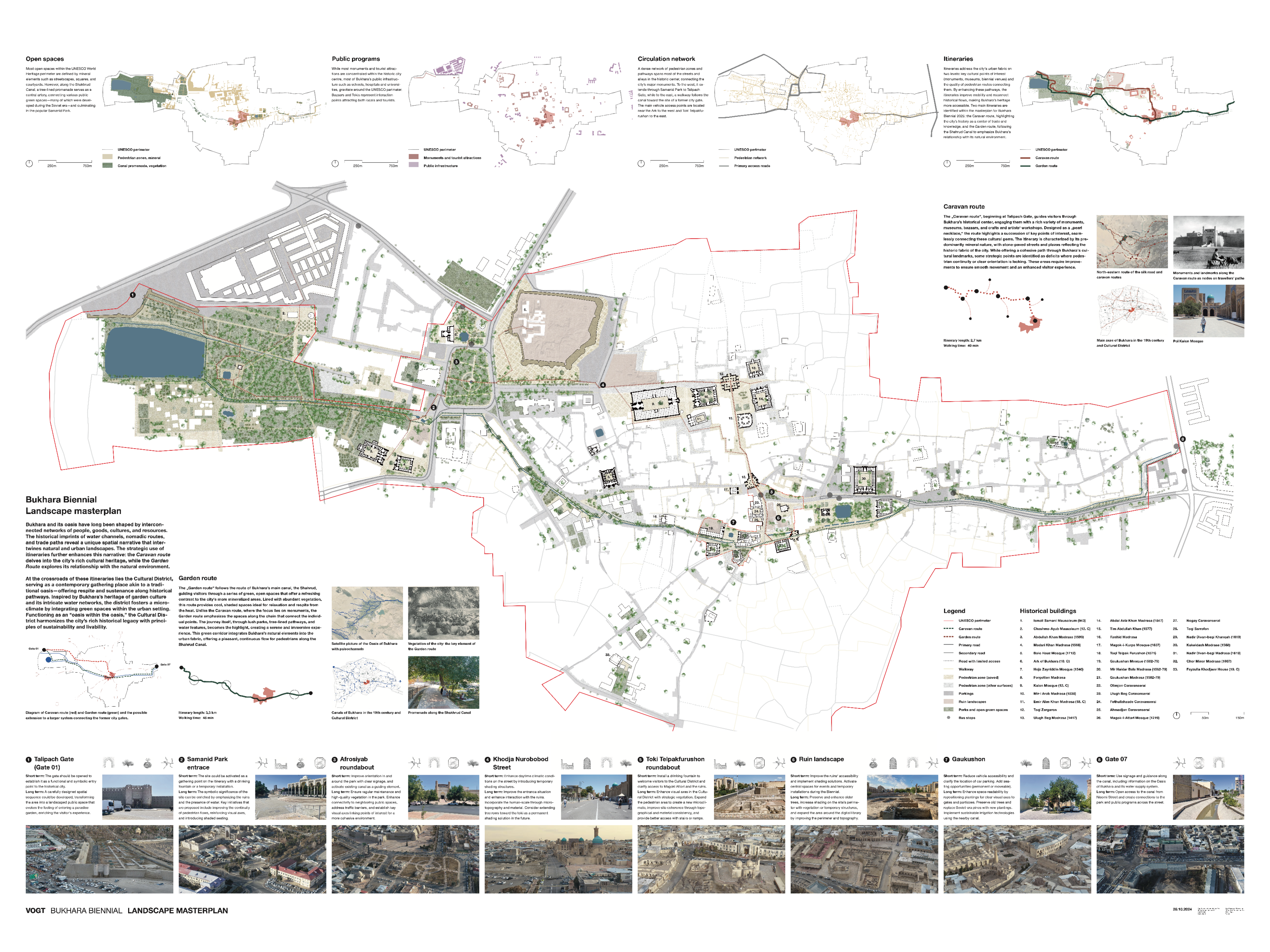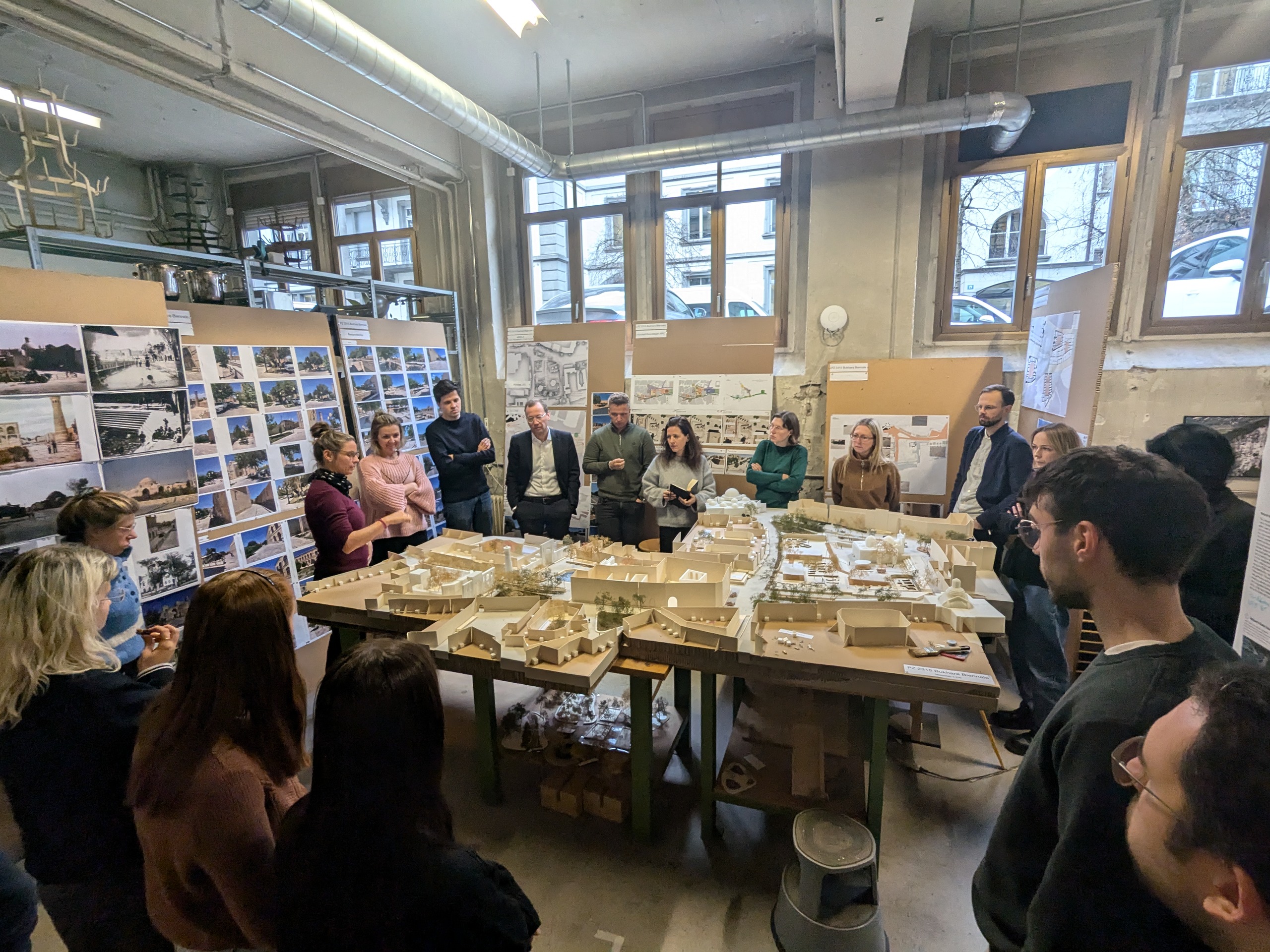The landscape concept design for the cultural district of over 2.5 ha, elaborated in close collaboration with the office Waiwai of Wael Al Awar and Werner Sobek addresses various dimensions of phasing and time. There is a long-term vision for the historic center of Bukhara, which refers to the previously gathered research and developed masterplan.
In the short term, the transformation of the site has to host the upcoming Bukhara Biennial 2025, titled “Recipes for Broken Hearts” from the Uzbekistan Art and Culture Development Foundation. The first Biennial in Bukhara will take place from the 5th September to 20th of November 2025.
The design concept envisions a series of public and private open spaces characterised by a strong softscape of trees, perennials and roses, including traditional fruit and flowering species. Carefully selected materials, new furniture, small fountains and vegetation contribute to the urban scale landscape that resonates with the World Heritage Site while at the same time creating a backdrop and platform for the artworks of the Biennial. The hardscape of small squares, streets, alleys, and courtyards forms part of a cohesive urban open space system grounded in the cultural tradition of Bukhara.
This can be achieved by introducing several layers of intervention, which will foster intimacy and microclimate. The Magok-i-Attari Mosque serves as a focal point for contemplation on cultural, historical, and educational matters. The Garden and the Caravan Route cross through the site. A new amphitheatre opens up the view to the Magok-i-Attari Mosque making performances possible on the lower level. One goal is to unify the materiality of the historic site and improve its readability. To enhance the quality of the open space from the perspective of pedestrians, it is necessary to reduce the amount of space dedicated to streets and functionality; therefore former streets are changed into pedestrian areas. The Biennale should not be viewed as an endpoint for changes. It should be regarded as a starting point for the enhancement of the city and for the people of Bukhara. The cultural district represents a significant opportunity within the urban fabric. The aim is to create an urban and human scale environment that evolves organically over time, becoming increasingly refined and integrated into its surrounding context.
In our Zurich office, we built a 1:100 working model of the site to understand and develop the sequences of open space typologies, taking the focal points and important view lines of the historic city into consideration. For furniture, walls and seating detail models were built in various scales.




